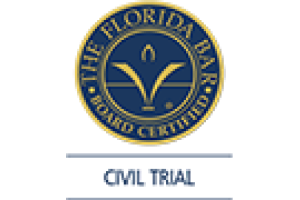Client Reviews
Paddle Board Accidents
An off-shoot of surfing, stand-up paddle boarding enables riders to venture further into water than traditional surfing. It can also be done on flat water, which makes it ideal for Florida’s Gulf Coast and in the countless rivers, inlets, canals and creeks. A report issued by the Outdoor Industry Association indicated stand-up paddle boarding had the most first-time participants that year of any other outdoor sporting activity in the U.S.
There is also, of course, the more traditional paddle boarding sport, which is done by kneeling on a board and paddling with one’s hands.
At Associates and Bruce L. Scheiner, Attorneys for the Injured, our paddle board injury attorneys recognize that with the growing rise in the number of participants in stand-up paddling, so too have the number of accidents, injuries and fatalities increased.
Being in good shape is especially important for those who participate in stand-up paddle boarding, as is having the proper safety gear and carefully checking the weather and quickly responding to sudden changes.
Guides who offer tours or rent equipment need to ensure customers are properly vetted and fully apprised of all possible risks before heading out.
Most rental and tour facilities require participants to sign a waiver or “assumption of risk” document, indicating knowledge that stand-up paddle boarding is an inherently dangerous sport, acknowledging fitness to participate and releasing the company from all liability. While courts do often uphold assumption of risk waivers as legal contracts, they are not “catch-alls.” Many are penned too broadly and purport a release of liability for negligence and recklessness on the part of the company or employees – something they can’t legally do.
It’s important never to assume your rights have been erased simply because a waiver was signed. Always consult with an experienced Fort Myers paddle board accident lawyer.
Common Paddleboard Injuries
While the Florida Fish & Wildlife Conservation Commission does not indicate how many accidents or fatalities specifically involved stand-up paddle boarding, we do know that in 10 reportable accidents, victims were rowing and/or paddling at the time of the incident. In 66 cases, victims were drifting.
Some of the most common injuries specific to stand-up paddle boarding include:
- Back injuries, due to the constant bending and pushing motion required to maneuver the paddle and propel the board. Improper technique can result in back strains and even disc problems.
- Shoulder and rotator cuff injuries are an issue because of the serious demand on these muscles from the constant paddling motion.
- Leg and knee injuries from the constant standing and squatting motions.
- Head and neck injuries, due to falls off the board, in some cases striking fixed objects.
- Overexertion injuries and heat exhaustion, from staying on the board longer than personal and environmental limitations would allow.
- Drowning. This is particularly true when riders fail to don a life jacket and/or have poor swimming ability.
It’s worth noting those in smaller vessels are far more likely to drown than those in larger ships, according to the U.S. Coast Guard. In fact, eight out of every 10 boaters who drowned were in vessels smaller than 21 feet. That includes those who participated in paddle sports.
The U.S. Coast Guard considers a paddleboard a vessel when it’s used beyond the “narrow limits of swimming, surfing or bathing.” That means when beyond those parameters, paddlers are required to wear a life jacket and a whistle.
Stand-Up Paddle Board Popularity
Most stand-up paddle board participants are between the ages of 18 and 44, according to a report by the American Canoe Association.
That year, there were 1.5 million participants in the activity, with a total of 9.6 national outings. While the activity was birthed on the Pacific Coast, it’s becoming increasingly common in regions of South Florida, including Fort Myers, Estero, Bonita Springs, Pine Island and Sanibel Island.
The average stand-up paddler made six outings in a year, though about 14 percent went a dozen times or more.
Paddle Board Safety
The Coast Guard, while recognizing the health benefits of paddle boarding, also knows the activity can be extremely hazardous. It has in turn issued the following safety tips for participants:
- Always wear a life jacket and carry a whistle.
- Make sure you are a competent swimmer.
- Know how to rescue yourself in the event you fall over.
- Learn how to tow another board and paddler.
- Educate yourself on local navigation rules and regulations.
- Understand the potential environmental perils, such as rip currents, winds, storms, etc.
- Wear a leash so you can always stay with your board.
- Be defensive and avoid areas where there is a congestion of boats.
- Take a boater safety course to learn the “rules of the road.”
Contact Associates and Bruce L. Scheiner, Attorneys for the Injured, for a free and confidential consultation to discuss your rights. There are no fees or costs unless we win. Offices in Fort Myers, Cape Coral, Naples and Port Charlotte.
Call 800-646-1210 for a Free Consultation












